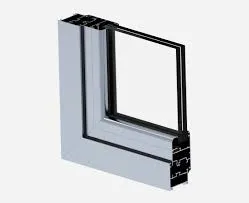Exploring the Beauty and Versatility of Ornamental Metalworks in Modern Design
Ornamental metals play a significant role in both aesthetic and practical applications in architecture and design. These materials, often characterized by their decorative features, can be used to enhance the visual appeal of various structures and objects. The use of ornamental metals dates back centuries, with their evolution reflecting advancements in technology, artistry, and cultural trends.
Historically, metals such as bronze, brass, and wrought iron have been favored for their durability and malleability, allowing artisans to create intricate designs. These materials were commonly employed in gates, railings, balconies, and facades of buildings, adding a touch of elegance and sophistication. Over time, ornamental metals have transcended traditional applications, finding new uses in contemporary art and design.
In modern architecture, the use of ornamental metals has gained popularity as architects and designers seek to blend functionality with beauty. Aluminum, stainless steel, and copper are often chosen for their corrosion resistance and lightweight properties. These metals can be formed into intricate patterns, latticework, and sculptural elements, serving not only as structural components but also as striking visual features. For instance, perforated metal panels can provide privacy while allowing natural light to filter through, creating dynamic shadow patterns.
ornamental metals

The versatility of ornamental metals extends beyond architecture. In interior design, metal accents have become a trend, with items like light fixtures, furniture, and decorative screens making bold statements. The reflective quality of metals can enhance a space, adding depth and dimension. Furthermore, advancements in technology have enabled the use of digital fabrication techniques, allowing for even more complex and customized designs.
Sustainability is an increasingly important consideration in the use of ornamental metals. Many manufacturers are focusing on eco-friendly practices, such as using recycled materials and energy-efficient production methods. This shift not only minimizes environmental impact but also meets the growing consumer demand for sustainable products.
In conclusion, ornamental metals are a vital component in the realms of architecture and design. They not only provide strength and resilience but also enable creativity and artistic expression. As technology advances and sustainability becomes a priority, the future of ornamental metals looks promising. Designers and architects will continue to innovate, creating stunning works that marry form and function, showcasing the beauty and versatility of these materials in both traditional and contemporary contexts.
-
Wrought Iron Components: Timeless Elegance and Structural StrengthNewsJul.28,2025
-
Window Hardware Essentials: Rollers, Handles, and Locking SolutionsNewsJul.28,2025
-
Small Agricultural Processing Machines: Corn Threshers, Cassava Chippers, Grain Peelers & Chaff CuttersNewsJul.28,2025
-
Sliding Rollers: Smooth, Silent, and Built to LastNewsJul.28,2025
-
Cast Iron Stoves: Timeless Heating with Modern EfficiencyNewsJul.28,2025
-
Cast Iron Pipe and Fitting: Durable, Fire-Resistant Solutions for Plumbing and DrainageNewsJul.28,2025
-
 Wrought Iron Components: Timeless Elegance and Structural StrengthJul-28-2025Wrought Iron Components: Timeless Elegance and Structural Strength
Wrought Iron Components: Timeless Elegance and Structural StrengthJul-28-2025Wrought Iron Components: Timeless Elegance and Structural Strength -
 Window Hardware Essentials: Rollers, Handles, and Locking SolutionsJul-28-2025Window Hardware Essentials: Rollers, Handles, and Locking Solutions
Window Hardware Essentials: Rollers, Handles, and Locking SolutionsJul-28-2025Window Hardware Essentials: Rollers, Handles, and Locking Solutions -
 Small Agricultural Processing Machines: Corn Threshers, Cassava Chippers, Grain Peelers & Chaff CuttersJul-28-2025Small Agricultural Processing Machines: Corn Threshers, Cassava Chippers, Grain Peelers & Chaff Cutters
Small Agricultural Processing Machines: Corn Threshers, Cassava Chippers, Grain Peelers & Chaff CuttersJul-28-2025Small Agricultural Processing Machines: Corn Threshers, Cassava Chippers, Grain Peelers & Chaff Cutters












